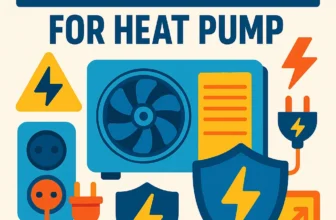Published By: Marc Edwards | Last updated on October 30, 2025 and reviewed by Editorial Team

Despite popular beliefs, it is actually not dangerous if you decided to daisy chain surge protectors and extension cords to each other. Many a time, we have no choice but to extend the length of one power strip or surge protector using another extension cord in order to reach far-flung wall A/C outlets.
And we are sure you would agree that nothing really happens, ya?
No fires, no electrical power trips, etc…
Well, the above is true only if certain conditions are met. These conditions vary across different countries and cities, and even weather conditions in the place you live in play a part. If you have decided to try this at home or in the office, please be aware that there is still a certain amount of risk involved when daisy-chaining surge protectors or extension cords together.
Ok, without much ado, let us show you when you should daisy chain your surge protectors and extension cords to each other.
1. Temporary Basis Only
It is important to note that a daisy chain connection from one extension cord to another should not be permanent. It is fine if you extend the length of your surge protector to a far-flung wall outlet for occasional usage. For example, charging up laptops, cellphones, and other non-heavy duty appliances. Remember this: most extension cords are not rated for continuous usage.
2. Do Not Exceed Ampacity
If you decide to daisy chain extension cords or power strips, it is crucially important not to load past the ampacity of the primary extension cord (the first one from the wall outlet). An additional cord extension should never cause the ampacity to go beyond that of the previous one or else a severe voltage drop may cause electrical damage to your plug-in devices.
3. Weather Conditions
We hope it is obvious that any form of electrical usage should be discouraged during severe weather conditions. In thunderstorms where power surges and spikes are frequent, it is definitely a bad idea to daisy chain your power strips. If possible, unplug all your electrical appliances from all power strips and surge protectors or get a whole house surge protector. That is probably the best protection against lightning strikes that could otherwise cause catastrophic damage to your electrical equipment and devices at home.
4. Non-Heavy-duty Usage
Like we mentioned earlier, heavy-duty appliances and devices should not be used on a secondary extension cord that is extended from one that is connected to the wall outlet. When power extension cords are extended, there is a drop in voltage; hence, some of your heavy-duty devices may be damaged or may not power up at all.
Things to Note
You should be aware that it is against the National Electrical Code safety regulations to use a surge protection device with a power strip or extension cord. Either combination is definitely not encouraged. A potential fire hazard (due to overheating of electrical devices) could happen and this is a risk you have to be aware of, should you decide to take the chance.
It is generally safe to daisy chain surge protectors and extension cords, provided you know what you are doing. In our opinion, most people do not know what they are doing. Most people will NOT know how to calculate things like ampacity, voltage usage of the electrical devices in use, etc.
Therefore, if you decide to connect your power strips, extension cords, and surge protectors at home, be aware of the risks involved. If possible, never do it when the above conditions are not met.
Permanent Solutions
Below are 2 permanent solutions for those of you wanting to play it safe:
1. Get an electrician to shift the PowerPoint from a far-flung location to a location that is convenient to you.
2. Get a Surge Protector Extension Cords here.
Important:: Daisy chain surge protectors and extension cords should only be for a short-term solution. Never use it permanently.







